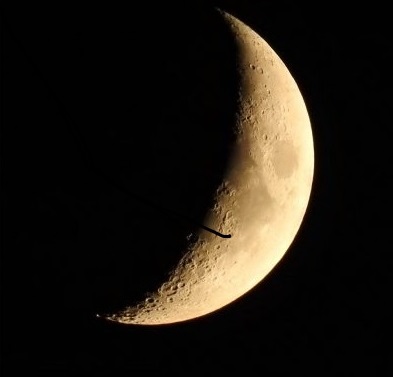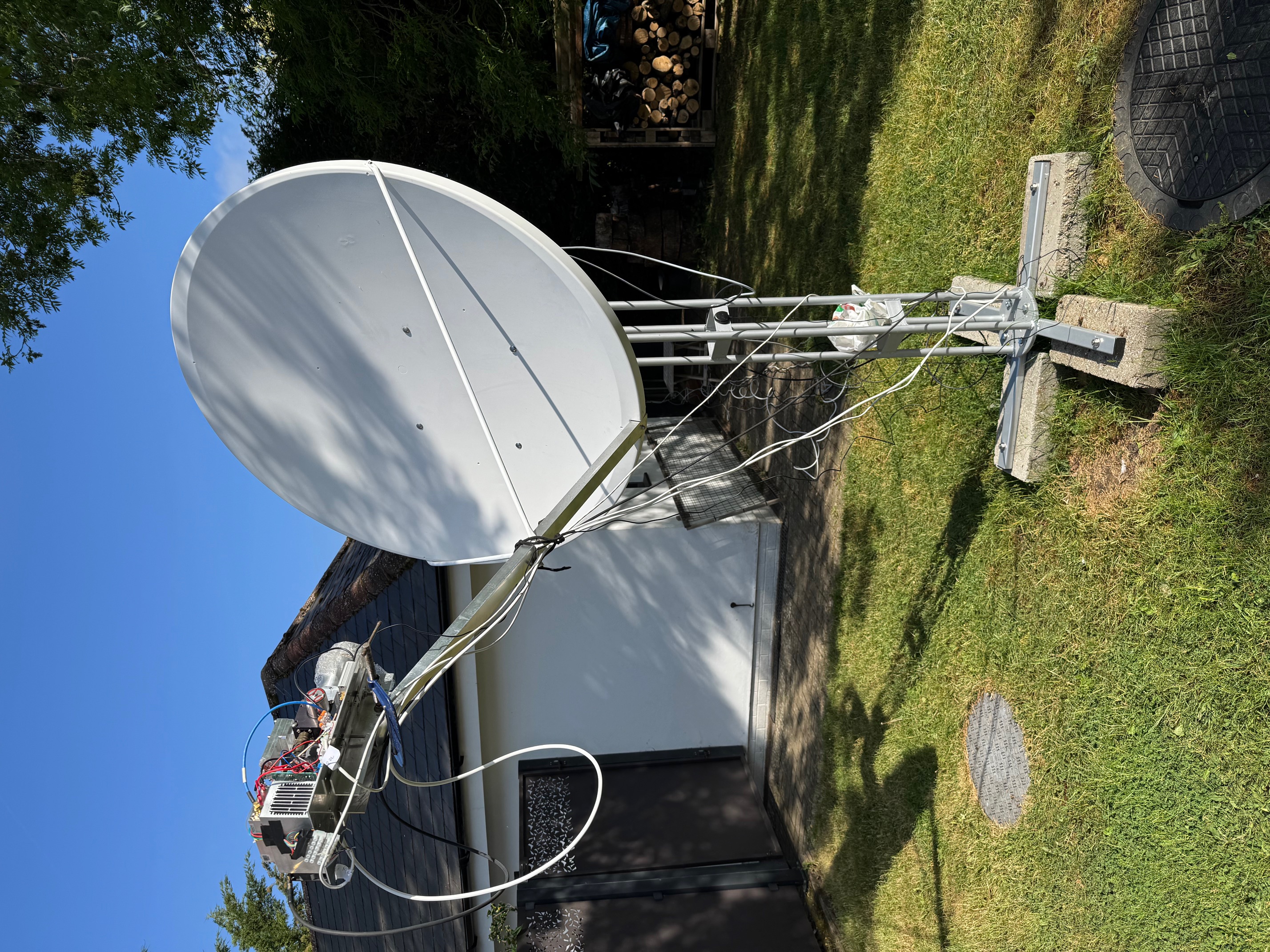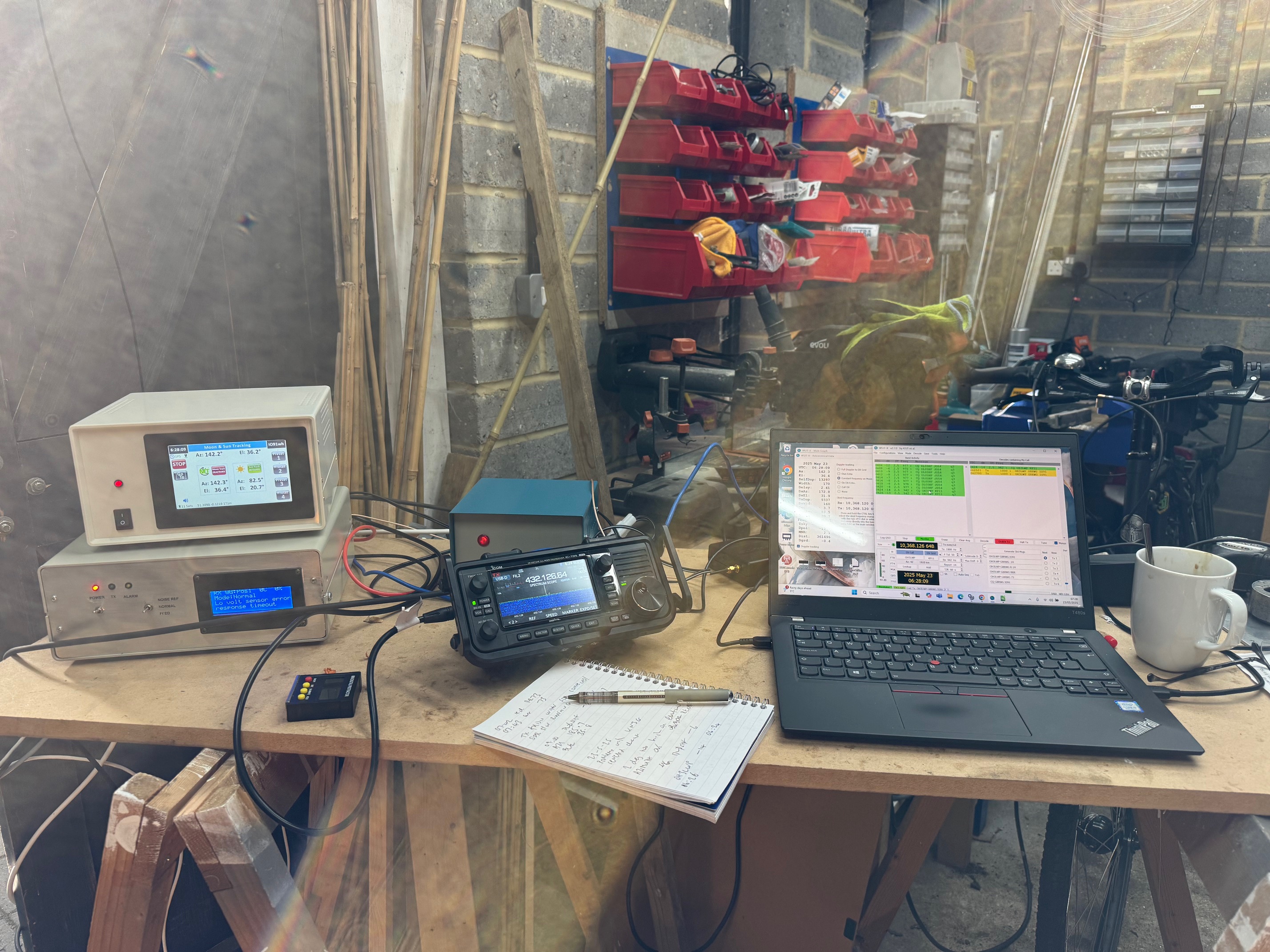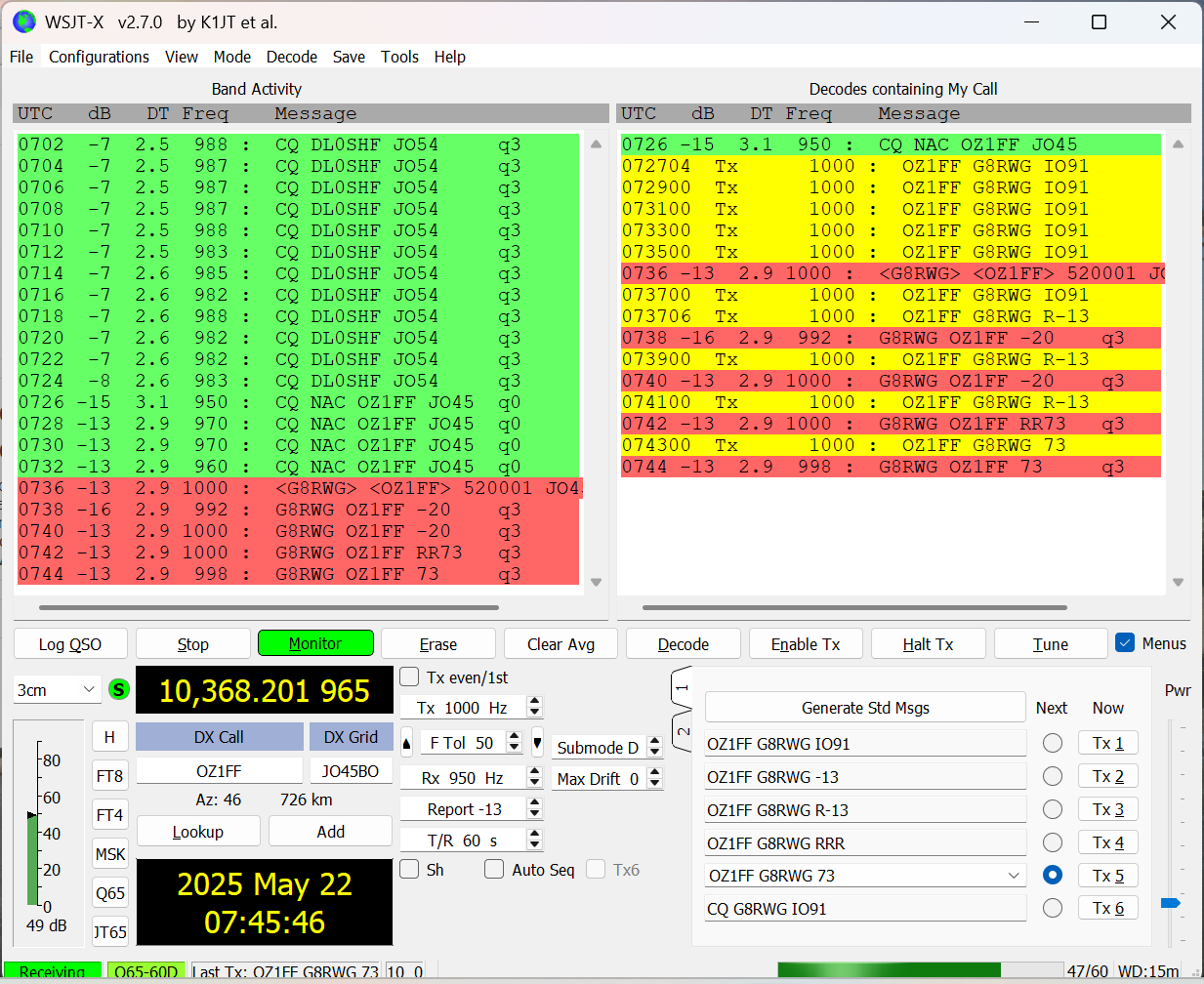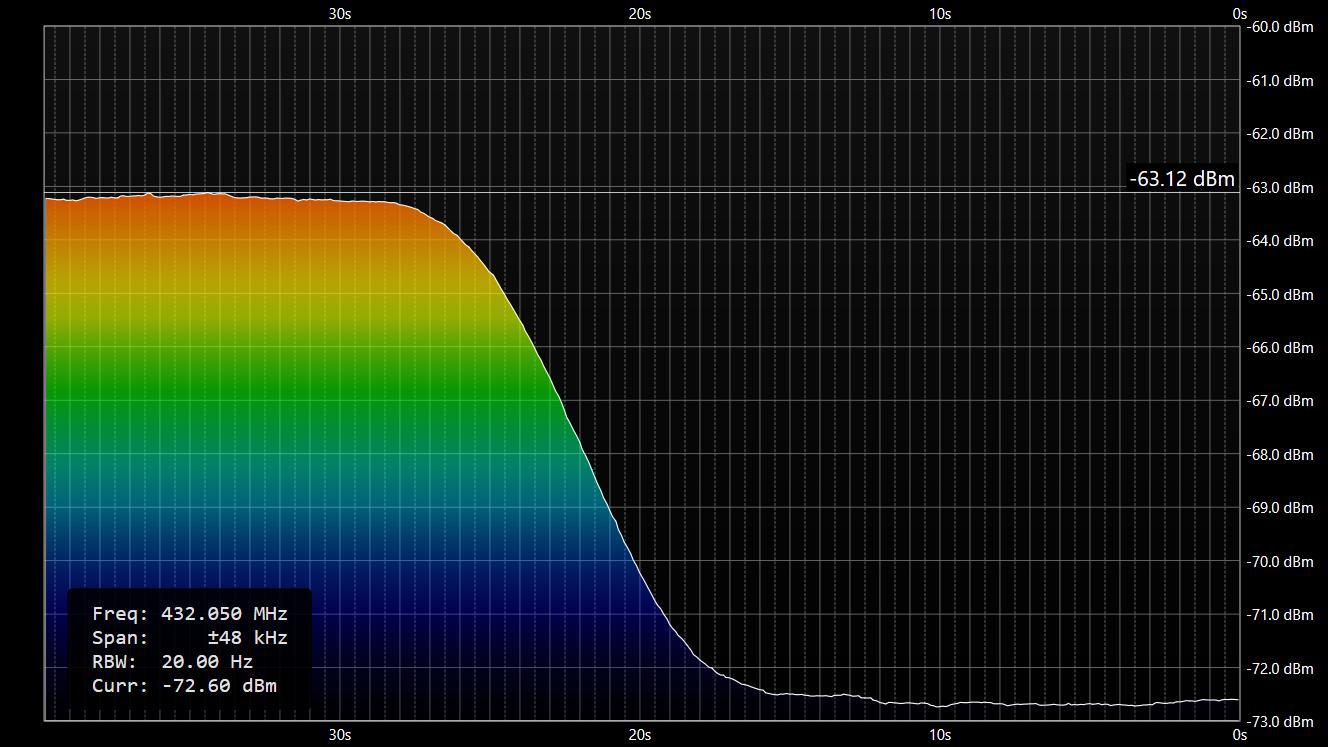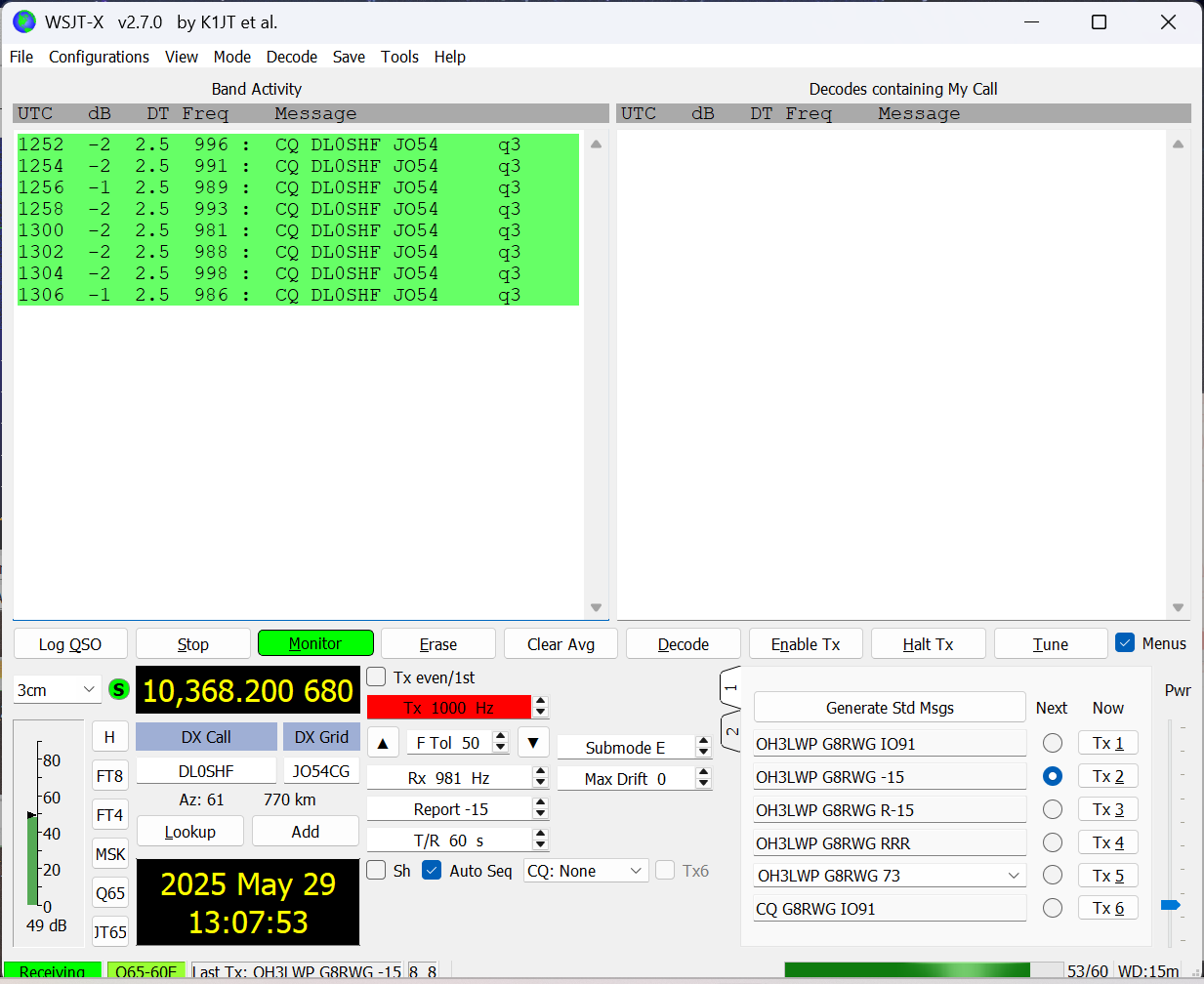First 10GHz EME QSOs
Jun 3, 2025
After a few failed attempts early last month, a combination of good moon conditions and fine, dry weather towards the end of May/early June helped to complete my first 10GHz EME QSOs.
On 22 May I completed my first ever 10GHz EME QSO with OZ1FF -13/-20, followed by ON5TA -12/-15, F6BKB -15/-18 on 23 May, and ON5TA -16/-19, G4YTL -16/-22 on 25 May.
A few days later, on 29 May once the moon had cleared the trees, I measured 9.5dB of sun noise (SFU @ 10GHZ=140) and DL0SHF was -2 around 13:00 UTC, the best I’ve ever heard it. QSOs were completed with PA3DZL -15/-24, OZ1LPR -3/-23, OK1KIR -8/-20, PA0BAT -10/-20, PA3DZL -14/-19, KM0T -14/-21.
On 31 May I ran some bench tests as there appeared to be an intermittent fault on transmit and occasionally I would see high noise levels on receive. 1 June was a frustrating day. It started well with a QSO with G4RFR -4/-19. Activity was high and I copied 15 stations including IS0/HB9COG but struggled to complete any more QSOs.
Further bench tests on 2 June showed that the IF relays used to route signals for the SDR and moon noise meter had developed a fault. After bypassing the relays I put the feedtray back on the dish and completed with OE9ERC -10/-23, IK6CAK -12/-16, IW2FZR -13/-19 and PA3DZL -14/-14.
The majority of these digital QSOs were completed using Q65-60D and a few on Q65-60E. E mode appears to be 3-4dB more sensitive which is the difference between success and failure for a small station like mine.
